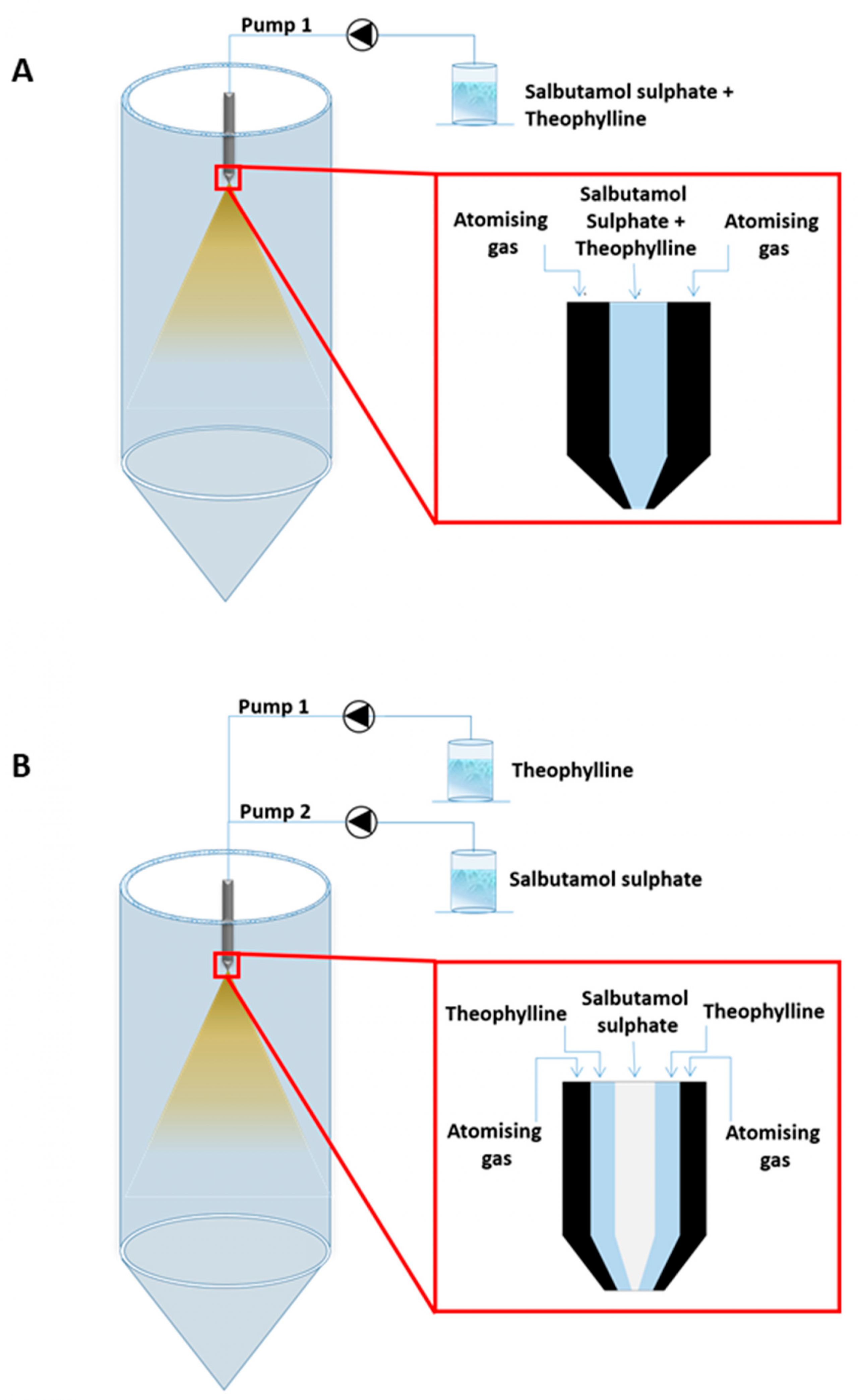The Use of a Three-Fluid Atomising Nozzle in the Production of Spray-Dried Theophylline/Salbutamol Sulphate Powders Intended for Pulmonary Delivery

The aim of this study was to investigate the use of a three-fluid atomising nozzle in a lab-scale spray dryer for the production of dry powders intended for pulmonary delivery. Powders were composed of salbutamol sulphate and theophylline in different weight ratios. The three-fluid nozzle technology enabled powders containing a high theophylline content to be obtained, overcoming the problems associated with its relatively low solubility, by pumping two separate feed solutions (containing the two different active pharmaceutical ingredients (APIs)) into the spray dryer via two separate nozzle channels at different feed rates. The final spray-dried products were characterized in terms of morphology, solid-state properties and aerosolization performance, and were compared with an equivalent formulation prepared using a standard two-fluid atomising nozzle. Results confirmed that most of the powders made using the three-fluid atomising nozzle met the required standards for a dry powder inhaler formulation in terms of physical characteristics; however, aerosolization characteristics require improvement if the powders are to be considered suitable for pulmonary delivery.
Download the full article here: The Use of a Three-Fluid Atomising Nozzle in the Production of Spray-Dried Theophylline:Salbutamol Sulphate Powders Intended for Pulmonary Delivery
or continue reading here: Focaroli, S.; Jiang, G.; O’Connell, P.; Fahy, J.V.; Healy, A.-M. The Use of a Three-Fluid Atomising Nozzle in the Production of Spray-Dried Theophylline/Salbutamol Sulphate Powders Intended for Pulmonary Delivery. Pharmaceutics 2020, 12, 1116.
Keywords: spray drying; three-fluid nozzle; dry powder; theophylline; salbutamol sulphate pulmonary drug delivery; dry powder inhaler (DPI)

